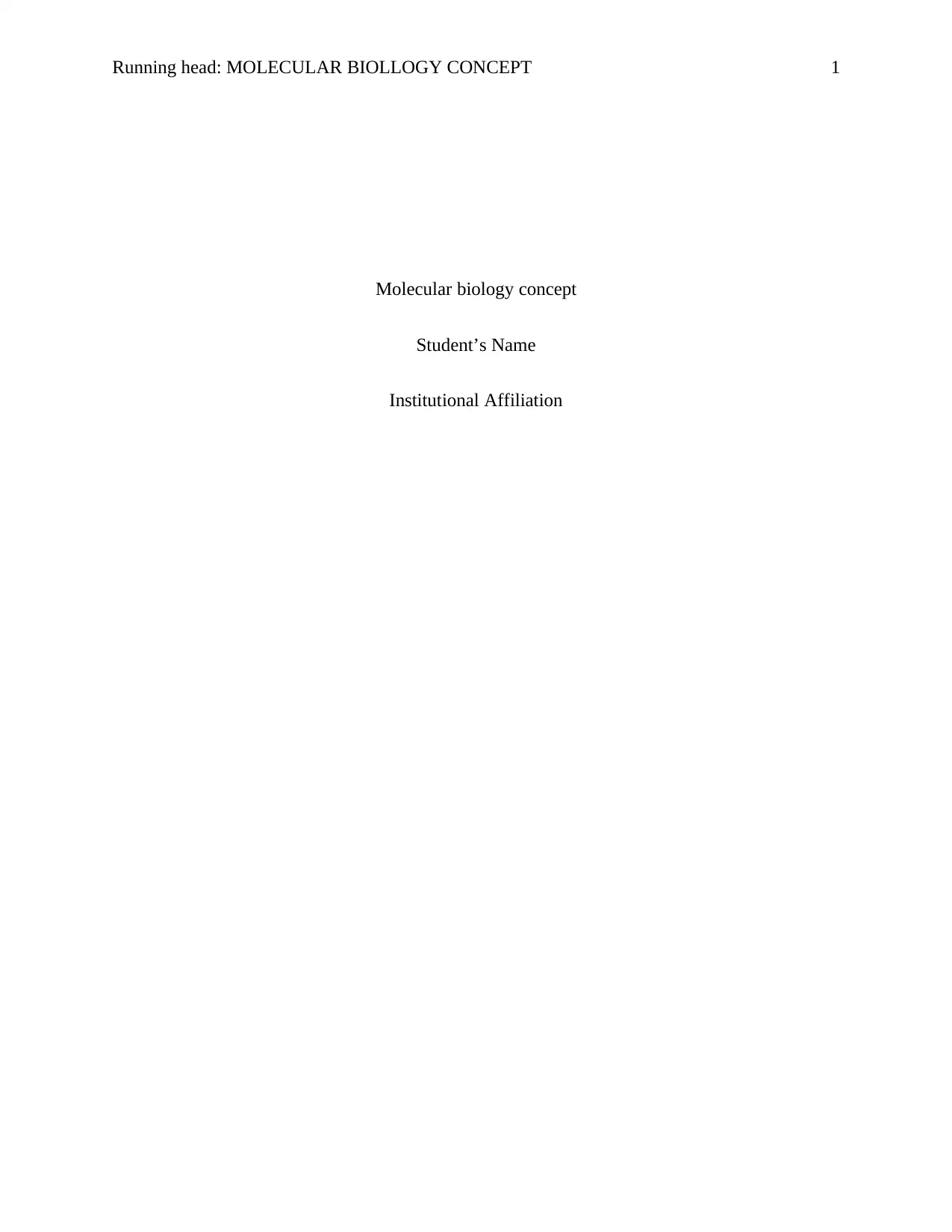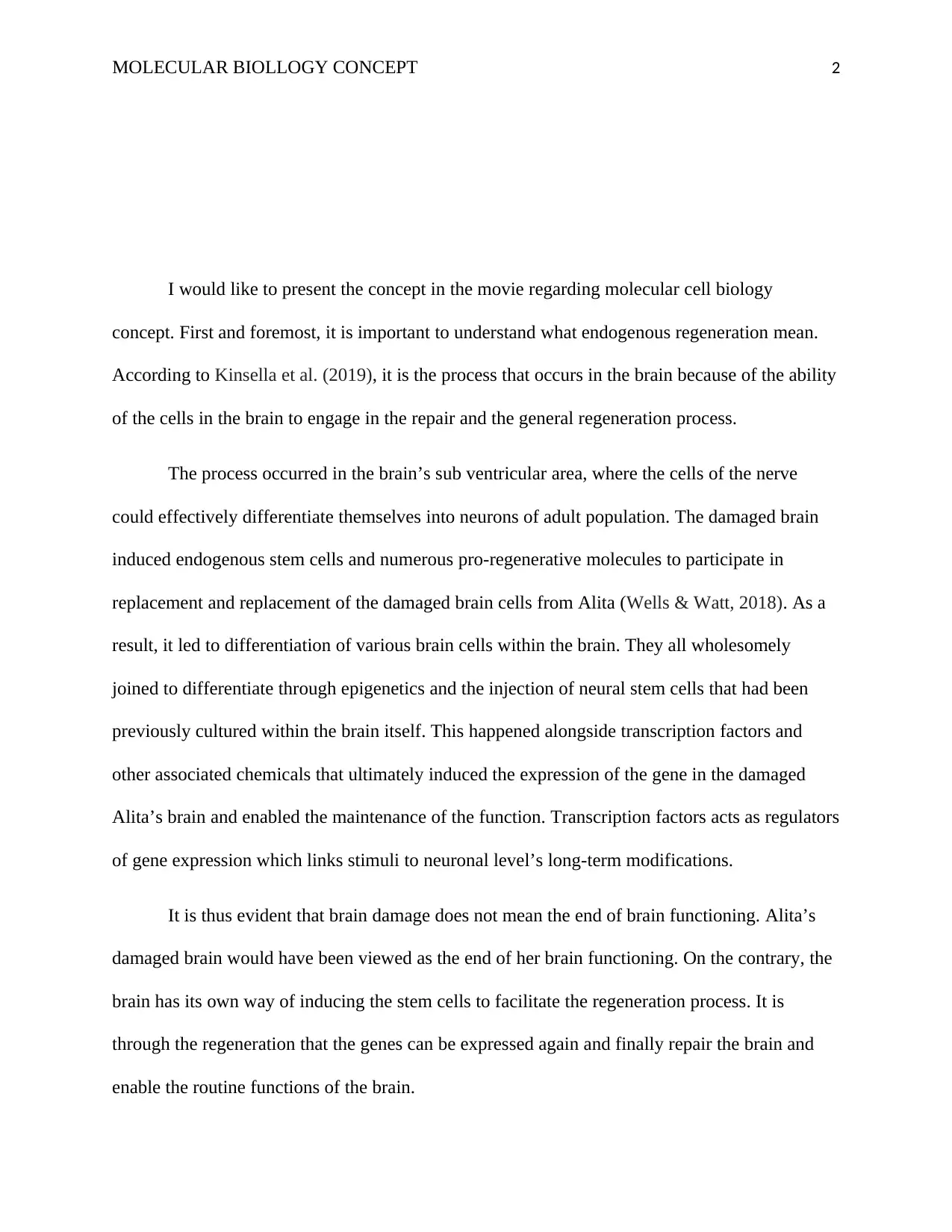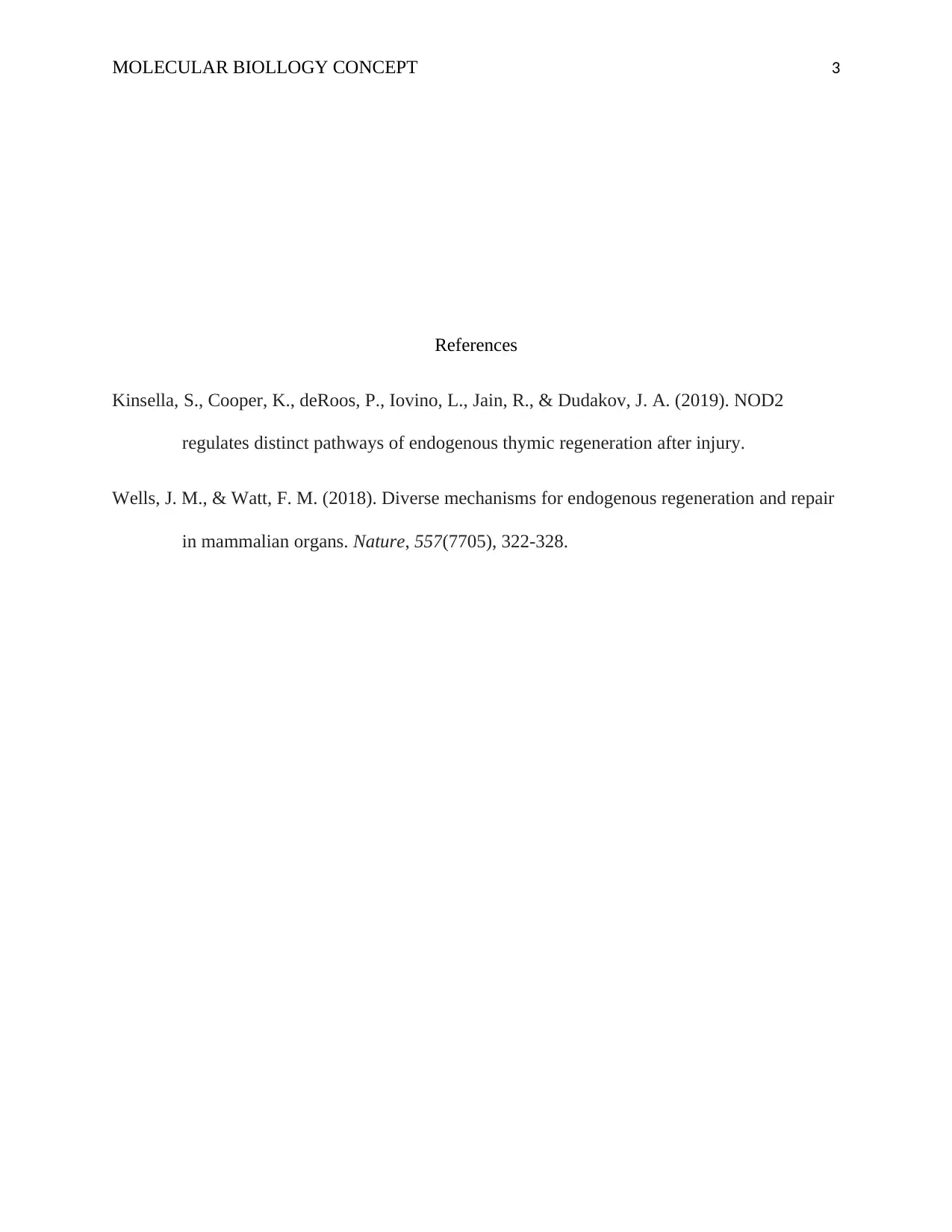Molecular Biology Concept: Brain Regeneration and Gene Expression
VerifiedAdded on 2022/09/09
|4
|399
|20
Report
AI Summary
This report delves into the molecular biology concept of brain regeneration, drawing insights from the movie 'Alita'. It explains endogenous regeneration, where the brain's cells repair and regenerate, particularly in the subventricular area. The report highlights how damaged brain cells can be replaced through the activation of endogenous stem cells and pro-regenerative molecules. It discusses the role of epigenetics and neural stem cell differentiation, alongside transcription factors, in inducing gene expression and facilitating brain function restoration. The report emphasizes that brain damage does not necessarily mean the end of brain function, as the brain has mechanisms to initiate regeneration. The report includes references to support the concepts discussed, providing a detailed understanding of the molecular processes involved in brain repair and regeneration.
1 out of 4









![[object Object]](/_next/static/media/star-bottom.7253800d.svg)